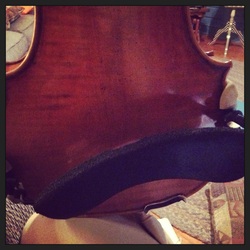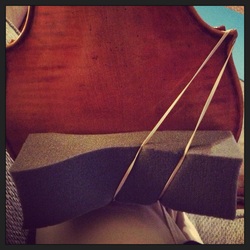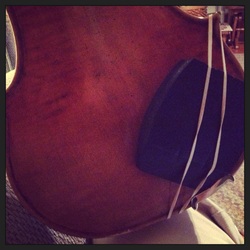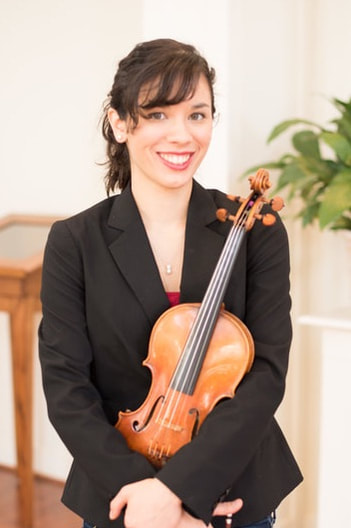


I've struggled throughout the years with many tension problems in my playing. Thanks to some wonderful teachers, I've made great progress. However, making this dramatic change to my setup is forcing me to relate to my body in a different way and has transformed my sound in many positive ways.
I'm now using a Huber shoulder pad - not for support, but to help keep the violin from slipping.
| Arguments For Using A Shoulder Rest 1. It provides support and makes the instrument easier to hold. 2. It frees up the left hand. 3. The shoulder rest can enhance the resonance of the instrument and make the sound better. | Arguments For Not Using A Shoulder Rest 1. In the absence of a shoulder rest, the ball and socket joint of the shoulder can swing freely under the instrument. 2. The player must really know how to balance the instrument between their collarbone and hand. 3. The natural weight of the instrument works with the body of the player to create a more organic and effortless playing technique. 4. The tone of the violin is freer without anything dampening the vibrations. |
In your search for the right setup, it's important to be honest and open with your teacher. Your teacher, as amazing as they are, is not you. They are not in your body, holding your violin and experiencing it the way you are. It's critical that as you experiment with different setups that you tell your teacher how it feels to you - what feels like it's working, what feels uncomfortable, etc.
There have been many great violinists throughout the years who have played with all different kinds of setups. Let's take a look at four of them.
The violinist Nathan Milstein played with no shoulder rest at all. Take a listen to his gorgeous performance of the Beethoven Kreutzer Sonata - which, by the way, he performed on his very last public recital along with the Bach Chaconne when he was in his early eighties.

 RSS Feed
RSS Feed